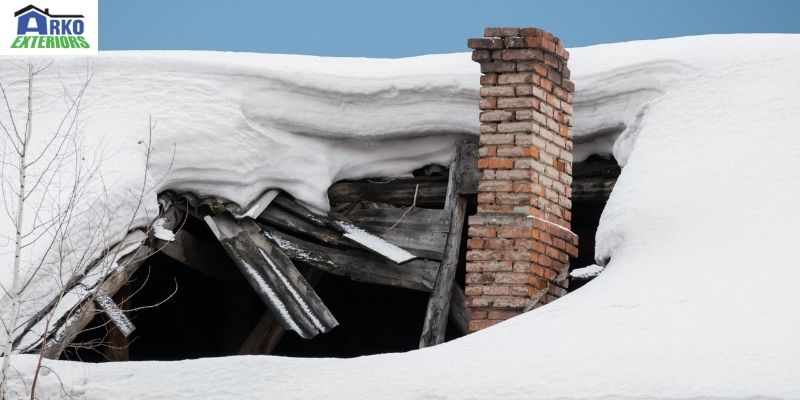The changing of the seasons affects your home as much as your body. Your roof, which is an integral part of your home, is no exception. You rely on your roof for protection against harsh weather. This is particularly true during winter, which is one of the seasons that heavily impacts your roof. The ice and snow of winter can affect the longevity of your roof.
How Winter Can Impact Your Roof
The ice and snow of a single winter season can be detrimental to your roof. An aged roof is more susceptible to winter weather because its structural integrity has been affected by years of ice and snow. However, you should know harsh winter conditions affect your roof regardless of its age.
Here is how your roof is affected adversely by winter…
1. Stress
Your roof will experience stress when external pressure is put on it. Ice and snow can be the pressure that affects your roof. Snow accumulation can produce a downward force that is quite heavy. This accumulation creates intense weight that affects your roof.
Weight in certain areas of your roof can cause it to sag. The sagging may result in the buildup of water, ice, and snow. Other issues, such as leaks, may occur from this isolated accumulation. Too much stress on a roof could cause it to cave in.
2. Leaks
The rainy summer months are associated with leaks. However, snow during the winter months is also a major cause of roof leaks. Melting snow and ice can find its way into small cracks in your roof or work its way under your shingles.
Already damaged roofs can be made worse by winter leaks. Leaks can soak insulation, ceilings, and walls, causing mold and water damage.
3. Ice Dams

When ice dams form, water will not be able to slide off your roof freely. This water can eventually find a way to leak into your home. It can also result in gutter damage as the water thaws and freezes multiple times.
4. Freeze And Thaw
A cycle of “freeze and thaw” can cause a lot of damage. Water can find its way into small cracks or gaps in your roof’s shingles. The temperature drop of the winter causes the water to freeze and expand. This expansion can result in the tearing of the shingles and also turn small cracks into larger ones.
5. Attic Condensation
You will not have issues with ice dams when your roof is properly ventilated. Your home is also protected from attic condensation when the roofing vents are solid. However, moisture can be created in your home as a result of the heavy buildup of snow and ice damming on your roof. This happens when your attic’s cold roof deck meets with the rising warm air from your home. Luckily, you can prevent this by updating the venting system of your roof or by installing metal roofing.
6. Hail Damage
Hail is another issue that can dent ridge caps, vents, flashings, and metal roofs. The dents weaken and shorten the lifespan of all these parts of your roofing system. Damage from hail is prevented mostly by the application of heavy-duty shingles. Hail damage may require roof replacement in some cases.
7. Water Damage
Accumulated water from freezing rain can cause serious damage to your roof. This becomes a bigger issue when water does not drain off properly from your roof due to the buildup of ice. This water build-up, if it gets beneath the shingles of your home, can cause excessive damage.
The interior of your home can suffer excessive damage, with water causing mold growth and affecting electrical wirings in your home. Water damage affects both flat and slanted roofs.
8. Snow Damage

The damage to your roof due to snow can be enormous. When the snow that falls accumulates on your roof, it gradually melts as a result of the heat emitted from your home. However, the accumulation may seep beneath your shingles when the snow falls more than it drains.
The damage from this situation can be serious. You must avoid using a shovel to remove the accumulated snow as you may damage your roof. Roof tiles/shingles can also be damaged when you misuse calcium chloride or salt to melt the snow.
9. Wind Damage
Strong winds during the winter season are a threat to the structural integrity of your roof. These winds, together with rain and hailstones, can tear off tiles/shingles that are not attached properly. This can result in significant damage as the space created may lead to water leakage. Furthermore, heavy debris falling on your roof can leave holes or dents.
Conclusion
Keeping your roof healthy during the winter can be challenging. However, it helps to maintain your roof properly. Maintenance can help keep your roof in good shape during the winter and beyond.

